Uncategorized
Holi 2025: Celebrating the Festival of Colores in India

Holi is India’s most vibrant and beloved festivals. It is celebrated in the joyous spirit of spring and the victory of good over evil. In its simplest terms, Holi is The Festival of Colours. People sprinkle gulal (coloured powder) on one another, pour water, dance, sing, and most importantly, engage in the spirit of togetherness and revitalization. In 2025, March 14 will be the date of celebration whereas, March 13 will be the night of Holika Dahan or Chhoti Holi. This is an article which dives into the depths of Holi (Holi 2025), its music, games, and the stories that construct its meaning.
What is Holi?
Holi is a festival for the Hindus living in India and Nepal primarily, and in other regions also because of the Indian diaspora that spread it. It takes place usually in the month of March, primarily on the full moon of Phalguna month. Holi is more than just a religious holiday; it is a cultural import which lets everyone participate in the joyful celebration. It is the time to forgive, forget past disputes, prosper relationships and enjoy the entering tides of spring.
Story Behind Holi (Holi 2025)
Holi’s origins are steeped in Hindu mythology, with two prominent legends shaping its significance:
The Triumph of Prahlada Over Holika:
The most widely known story involves the demon king Hiranyakashipu, who demanded that everyone worship him as a god. His son, Prahlada, however, remained devoted to Lord Vishnu. Furious, Hiranyakashipu enlisted his sister Holika, who was immune to fire, to kill Prahlada by sitting with him in a blazing pyre. Miraculously, Prahlada’s devotion to Vishnu protected him, and Holika burnt instead. This victory of good over evil is commemorated during Holika Dahan, where bonfires are lit to symbolise the destruction of negativity.
Krishna and Radha’s Playful Love:
Another cherished tale ties Holi to Lord Krishna, an incarnation of Vishnu. As a young boy with dark blue skin, Krishna was envious of Radha’s fair complexion. His mother, Yashoda, playfully suggested he colour Radha’s face to match his own. Krishna did so, and this mischievous act evolved into the tradition of throwing colours. In regions like Mathura and Vrindavan—Krishna’s birthplace and childhood home—Holi celebrations are especially grand, often lasting a week with events like Lathmar Holi, where women playfully hit men with sticks.
These stories highlight Holi’s dual themes: the victory of righteousness and the celebration of love and unity.
Holi in India: A Nationwide festival (Holi 2025)
Holi is celebrated across India with regional flair, making it a festival of diverse expressions. In northern states like Uttar Pradesh, Rajasthan, and Punjab, the focus is on colors, water fights, and feasts. In Mathura and Vrindavan, devotees honour Krishna with temple rituals and flower-based Holi (Phoolon ki Holi). Barsana’s Lathmar Holi draws crowds as women chase men with sticks, reenacting Krishna’s playful teasing of the Gopis. In West Bengal, it’s called Dol Jatra, featuring processions with idols of Krishna and Radha. Punjab’s Sikhs celebrate Hola Mohalla alongside Holi, showcasing martial arts and bravery.
No matter the region, Holi breaks down social barriers. People of all ages, castes, and backgrounds drench each other in colours, shouting “Holi Hai!” (“It’s Holi!”) as music fills the air and streets become vibrant playgrounds.
Colour Throwing: The hallmark of Holi, where participants toss dry coloured powders (gulal) or spray coloured water using pichkaris (water guns) and water balloons.
Lathmar Holi: In Barsana and Nandgaon, women wield sticks (lathis) to “beat” men, who defend themselves with shields, all in good fun.
Water Fights: Buckets, balloons, and hoses turn neighbourhoods into battlegrounds of laughter.
Treasure Hunts: In some communities, children play games like hiding coloured powders or treats for others to find.
Dance-offs: Impromptu dance circles erupt as people move to Holi music, often fuelled by bhang (a cannabis-infused drink) or thandai.
These games embody Holi’s spirit of letting go and embracing joy.
Holi 2025: When and Where to Celebrate. In 2025, Holi will light up India on March 14, with Holika Dahan on March 13. The best places to experience it include:
Mathura and Vrindavan: For a spiritual and colourful Holi tied to Krishna.
Jaipur: Known for its Gulaal Gotas (colour-filled balls) and Rajasthani folk performances.
Delhi: Hosts modern Holi parties with music and dance, like the Holi Moo Festival. Pushkar offers a mix of bonfires, camel fairs, and colour-throwing in a desert setting
Varanasi: Combines Holi with spiritual rituals along the Ganges. Travellers should plan ahead, as Holi draws millions of visitors and accommodations fill up fast.
The Festival of Colores: WDC News
Holi’s nickname, the “Festival of Colours,” comes from its vivid use of gulal and coloured water. Traditionally, these colours were natural—yellow from turmeric, red from sandalwood, green from henna—but today, synthetic powders dominate for their brightness and affordability. Each colour carries meaning: red for love, green for renewal, blue for Krishna, and yellow for prosperity. Washing off the colours at day’s end symbolises a fresh start, cleansed of past burdens.
Holi Music: The Soundtrack of Celebration
Music is the heartbeat of Holi. Traditional folk songs like “Holi Khele Raghuveera” and “Rang Barse” (popularised by Bollywood) set the tone, blending devotional lyrics with playful vibes. In rural areas, dhol drums and harmoniums accompany dances, while urban celebrations feature Bollywood hits and DJ remixes. Songs often narrate Krishna’s antics or celebrate spring’s beauty, creating an infectious energy that gets everyone moving.

Uncategorized
Operation Sindoor: India’s Decisive Strike Against Terror in Pakistan
On May 7, 2025, India launched Operation Sindoor, led by the likes of Colonel Sofia Qureshi and Wing Commander Vyomika Singh, targeting terrorist hideouts in Pakistan and PoK, including Bahawalpur and Muzaffarabad. Aimed at eliminating terror networks like Jaish-e-Mohammed and Lashkar-e-Taiba, the operation marked a truce between India and Pakistan. Learn about the mission’s objectives, results, and global reactions in this article.
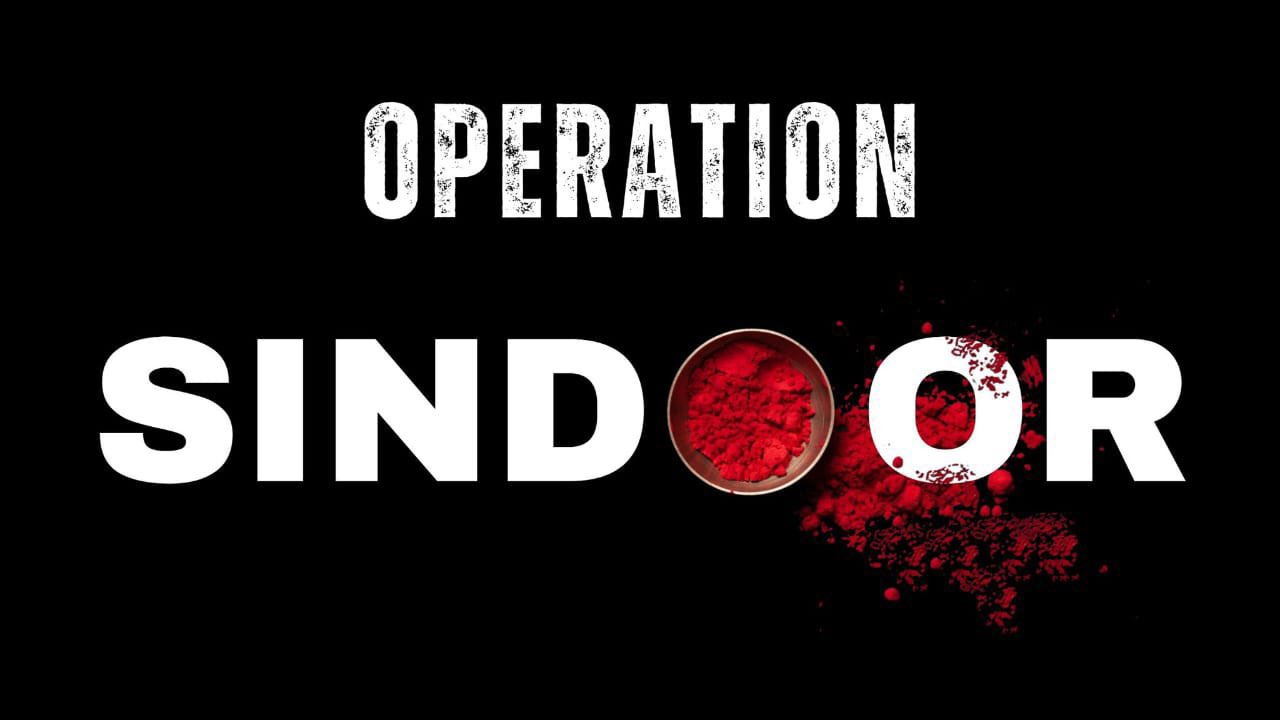
Jai Hind, On May 7, 2025, India launched Operation Sindoor, a planned military operation targeting terrorist infrastructure in Pakistan and Pakistan-occupied Kashmir (PoK). The operation, also called Operation Sindoor or Sindoor Operation, was a response to the brutal terrorist attack in Pahalgam on April 22, 2025, in which 26 civilians, mostly tourists, were gunned down after being asked about their religion in Pahalgam, Jammu and Kashmir.
Understanding Operation Sindoor
Operation Sindoor was carried out by the Indian Army, Indian Air Force (IAF), and Indian Navy together with an understanding and strategy against the terrorists. The missile was launched at 1:44 am on May 7, 2025, targeting terror camps like Bahawalpur, Muridke, Muzaffarabad, Kotli, and Bhimber. In which nine terrorist camps were attacked. The operation targeted bases and infrastructure belonging to Jaish-e-Mohammed (JeM), Lashkar-e-Taiba (LeT), and Hizbul Mujahideen. The Ministry of Defence and the generals of all three departments said that this operation was carried out only on terrorist hideouts and not on Pakistani military or civilians. The name Sindoor symbolizes the red vermilion worn by married Hindu women.
Key Players and Targets
- Maulana Masood Azhar, the notorious Jaish-e-Mohammed leader, declared a terrorist by the United Nations, was the main focus. Markaz Subhan Allah in Bahawalpur, Azhar’s hometown and a Jaish-e-Mohammed stronghold, was destroyed. Reports suggest that 10 of Azhar’s relatives, including his sister and brother-in-law, were killed. What happened to Azhar, however, is not confirmed.
- Muridke: Lashkar headquarters at Markaz Taiba, a terrorist training ground, was destroyed, where the terrorists were recruited and trained.
- Muzaffarabad and Kotli: Jaish and Lashkar camps were located in PoK locations. Residents are worried, although India says no civilians were harmed.
- Advanced weapons: The operation was carried out using SCALP cruise missiles, Hammer bombs, and kamikaze drones from Rafale jets.
- Colonel Sofia Qureshi and Wing Commander Vyomika Singh: Today at 10:30 AM, during a press conference, Colonel Sofia Qureshi and Wing Commander Vyomika Singh briefed the media about the operation that destroyed nine terror camps. The women officers played a vital role in Operation Sindoor.
- Vikram Misri: India’s Foreign Secretary, Vikram Misri, attended the press briefing in which he informed global powers like the US, UK, Saudi Arabia, UAE, and Russia about the attacks.
Casualties and Damage
It is still not known how many people were killed. According to Masood Azhar, ten members of his family were reported dead in Bahawalpur. From the Indian side, our officials said that seven locals of a village near Simke were killed and 32 others were injured in the shelling by the Pakistan Army.
India has not targeted any Pakistani civilians, an Indian Army officer said. “There are no reports of civilian casualties in Pakistan.” But Pakistan confirmed civilian casualties in several places, including Muzaffarabad, which could be terrorists.
International Reactions
- US President Donald Trump expressed hope that the hostilities would end soon, given the long history of tensions between India and Pakistan.
- China: Beijing said it “regretted” the attacks and urged both countries to avoid escalating tensions.
- Narendra Modi: According to sources, Prime Minister Narendra Modi watched the operation throughout the night and was informed about its completion. Union Home Minister Rajnath Singh and Amit Shah praised the operation, with Shah saying it was a “befitting reply” to terrorism.
Strategic Implications
Operation Sindoor highlights India’s stance on terrorism, as stated by Karnataka minister Priyank Kharge. The precision of military might was showcased with S-400 systems, JF-17 countermeasures, and SCALP missile range capabilities that were advanced weaponry on display during the operation. The participation of NTRO and other intelligence agencies in target identification also has its significance during the operation.
With that said, the questions remain: Did India attack Pakistan today?
Yes, but only the terror infrastructure was targeted. Did the India-Pakistan war start? No. Although the tension is palpable. Will there be an attack from Pakistan on India? The situation is ever so delicate, and with Pakistan announcing the ceasefire, restraint is suggested. How many terrorists were killed in Operation Sindoor? There is no available information on that. What is known is that significant terror networks were disrupted.
With that said, the questions remain: Did India attack Pakistan today? Yes, but only the terror infrastructure was targeted. Did the India-Pakistan war start? No. Although the tension is palpable. Will there be an attack from Pakistan on India? The situation is ever so delicate, and with Pakistan announcing the ceasefire, restraint is suggested. How many terrorists were killed in Operation Sindoor? There is no available information on that. What is known is that significant terror networks were disrupted.
Conclusion
Operation Sindoor is a symbol of India’s tough stand against terrorism. The success of this operation has further increased national pride in India. The Indians were determined to take revenge after their attack on Pahalgam. “The risk of Pakistan’s response and escalation of tensions has worried the people of Pakistan. Will this Operation Sindoor prove to be the first step towards ending terrorism?
Information sources for this article: Twitter, Official press confirmation, Ministry of Defence press release, or Indian Army, DD News, and Follow WDC News Team for the latest updates. Jai Hind!
#OperationSindoor #IndiaArmy #NarendraModi #JaiHind
-
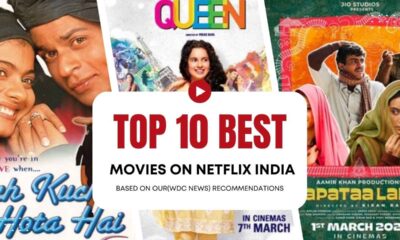
 Entertainment3 months ago
Entertainment3 months agoWe have found the 10 best Hindi movies on Netflix India for you
-

 Entertainment6 months ago
Entertainment6 months agoGame Changer Teaser: Unveiling Ram Charan’s Amazing Avatars
-
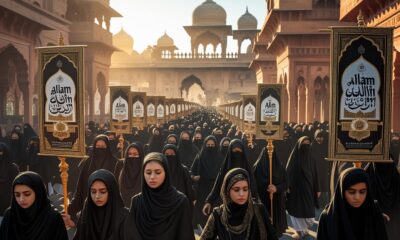
 Religious2 weeks ago
Religious2 weeks agoMuharram 2025: Honoring the Legacy of Imam Hussain in India
-

 Education2 months ago
Education2 months agoCBSE Result 2025: Access Class 10 and Class 12 Results Online via Digilocker
-

 Business2 months ago
Business2 months agoNew IPO 2025: Complete Guide to Upcoming Listings in India & USA
-
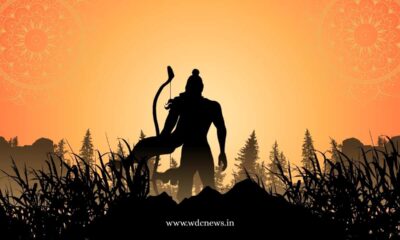
 Religious3 months ago
Religious3 months agoRam Navami 2025 Unveiled: When Is It, Hazaribagh’s Hidden Gem, and a State-by-State Festive Fiesta!
-
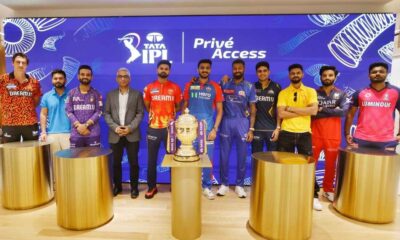
 Sports4 months ago
Sports4 months agoTata IPL 2025 Begins! Kolkata Knight Riders vs Royal Challengers Bengaluru – 1st Match Showdown at Eden Gardens
-

 Sports5 months ago
Sports5 months agoChanging the Game: Meet the Fresh Leaders of IPL 2025






